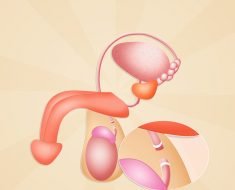Anyone who has ever suffered from a urinary tract infection, know how fast antibiotics can work. Often, the burning pain disappeared after only a few hours. People and animals utilize only a portion of the active substance, the Rest is excreted and ends up in the environment. Researchers at the University of York wanted to find out how much the antibiotics already in the rivers of the world swims.
For this, they analyzed 711 samples from 72 countries, and sought for traces of the most commonly used antibiotics. Among the studied rivers of the Mekong river, the Tiber, the Seine and the Thames. In 65 percent of the samples, the researchers were able to find. “Our results are instructive and at the same time disturbing, because they prove a widespread contamination of river systems around the world with antibiotics,” says Alistair Boxall, one of the study coordinators.
Also in Germany antibiotics ends up in the aquatic
What is the impact of antibiotic residues on the environment and global health, is still largely unexplored. It is certain, however, that with the antibiotics, the number of resistant pathogens increases. The world health organization (WHO) considers antibiotic resistance already as a global health threat, which could demand up to 2050, ten million people live.
Mandatory limits for antibiotics in the environment, there is not in Germany. The Federal environment Agency and environmental organizations call for this, however for quite some time. The British researchers compared their measurement results with limit values that consists of approximately one hundred private companies in the Biotech and pharmaceutical industry has agreed to avoid antibiotic resistance. The result: The guideline values are exceeded in the samples often.
Antibiotics can take multiple Paths in the environment, for example on agriculture or wastewater treatment plants. In countries where waste water is barely cleaned, exacerbated this Problem. Therefore, it is not surprising that the British researchers in the current study have been demonstrated in Asia and Africa, high amounts of antibiotics. The highest values were measured in Bangladesh, Kenya, Ghana, Pakistan and Nigeria.
Metronidazole exceeded the recommended limits are especially clear. It is also used in bacterial infections of the skin or in the mouth. In the case of a sample from Bangladesh, the proven amount exceeded the company’s recommended limit of 300 Times. Most commonly residues of Trimethoprim were detected in 307 of 711 sampling points. The antibiotic effect, especially against urinary tract infections.
Five antibiotics in the river Thames
In European as well as North and South American waters, the researchers also found residues of antibiotics. In the Thames, five antibiotics were detected. Ciprofloxacin is used against a variety of bacterial infections, passed on three measurement recommended limits set. The highest concentration of antibiotics in the river Thames was 233 nano-grams per Liter. For comparison: In Bangladesh, it was the 170-Fold higher.
The highest concentrations in Europe come from Austria. They were, according to the researchers four times higher than the safe current value. In Germany, too, traces of antibiotics and resistant bacteria in lakes and rivers have already been demonstrated.
For healthy people this is usually not a Problem. Dangerous it can be but, if the immune system is weakened by disease. Even newborns and seniors have of developing a higher risk, when in contact with the bacteria. The probability of being infected when bathing in the germs, however, is extremely low.
So far, the British researchers have not published their data yet, but just at a conference in Helsinki will be presented. It is also unclear what is the influence of the antibiotic residues have on the Flora and Fauna.





